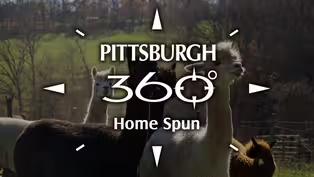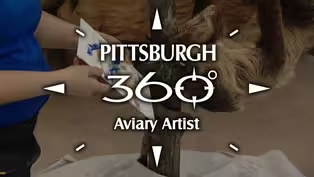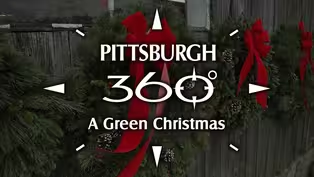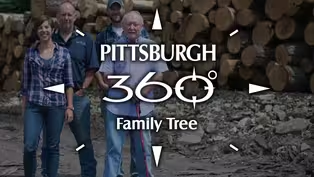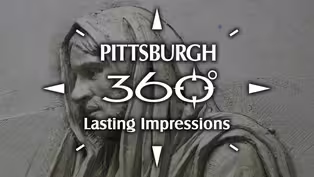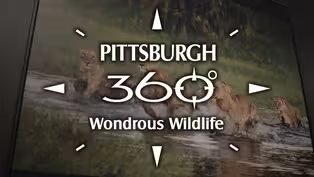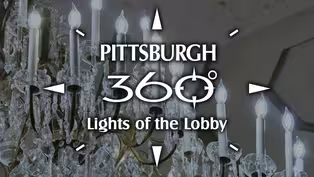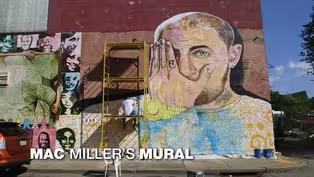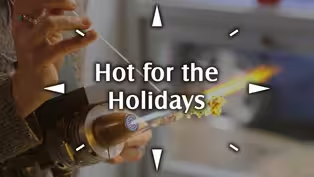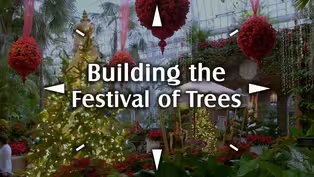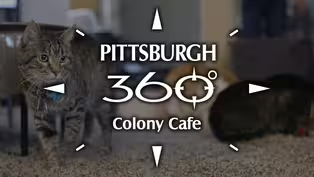
Roots Run Deep
2/26/2021 | 5m 45sVideo has Closed Captions
A unique exhibit is exploring how contemporary Black hairstyles are tied to tradition.
A unique exhibit in Pittsburgh is exploring how contemporary Black hairstyles are tied to tradition. Featuring the work of 16 Black artists and stylists, “Roots Run Deep” examines the historic influence of the past on modern stylings today. A long-time Pittsburgh hair salon owner also reflects on trends and inspirations through the years.
Problems playing video? | Closed Captioning Feedback
Problems playing video? | Closed Captioning Feedback
More Local Stories is a local public television program presented by WQED

Roots Run Deep
2/26/2021 | 5m 45sVideo has Closed Captions
A unique exhibit in Pittsburgh is exploring how contemporary Black hairstyles are tied to tradition. Featuring the work of 16 Black artists and stylists, “Roots Run Deep” examines the historic influence of the past on modern stylings today. A long-time Pittsburgh hair salon owner also reflects on trends and inspirations through the years.
Problems playing video? | Closed Captioning Feedback
How to Watch More Local Stories
More Local Stories is available to stream on pbs.org and the free PBS App, available on iPhone, Apple TV, Android TV, Android smartphones, Amazon Fire TV, Amazon Fire Tablet, Roku, Samsung Smart TV, and Vizio.
Providing Support for PBS.org
Learn Moreabout PBS online sponsorshipMore from This Collection
Video has Closed Captions
This farm and fiber mill processes its own farm-grown alpaca fiber to create products. (3m 43s)
Video has Closed Captions
Recently, the aviary's "Valentino," the drawing sloth, is getting a lot of attention. (5m 39s)
Video has Closed Captions
In Washington County, a family farm has been making wreaths for more than three decades. (4m 49s)
Video has Closed Captions
Four generations of the Hickman family have become a world-wide distributor of top-quality (6m 49s)
Video has Closed Captions
Efforts are underway in Monongahela to renovate a landmark home built in 1872. (8m 22s)
Video has Closed Captions
A request from Saint Emma Monastery became sculpture Cliff Dupil's biggest challenge. (7m 39s)
Video has Closed Captions
Tour this unique exhibition, "National Geographic: 50 Greatest Wildlife Photographs." (7m 49s)
Video has Closed Captions
See the ceremonial spectacle for three crystal chandeliers at this historic hotel. (6m 55s)
Video has Closed Captions
The late Mac Miller will be forever remembered for his music, and now in a work of art. (2m 4s)
Video has Closed Captions
Visit the Pittsburgh Glass Center - where the public is invited to learn and create. (4m 21s)
Building the Festival of Trees
Video has Closed Captions
Take a behind-the-scenes look at building the Festival of Trees at Phipps Conservatory. (4m 51s)
Video has Closed Captions
Visit a bistro, bar and cat cafe in where you can enjoy a food, drink and the company of c (4m 9s)
Providing Support for PBS.org
Learn Moreabout PBS online sponsorship(upbeat music) - [Narrator] From the beauty salon.
(laughing) - Black hair is beautiful.
And there's so many things you can do with it.
Naturally.
I love it.
- [Narrator] To the studio gallery.
- [Tara] Quinn Hunter has two pieces in the show, one of them is a braided hair chandelier.
- [Narrator] A unique exhibit at the Brew House Gallery on Pittsburgh's south side celebrates the history, culture and beauty of Black hair.
- I want to represent the idea that hairstyling is used for self-expression.
And I think it varies from person to person.
- [Narrator] Tara Fay Coleman is curator of Roots Run Deep, a contemporary survey of African-American hair culture.
- I'm really excited to have work that displays Black hair as an art form and practices that originated in the 1600's and across the diaspora.
- [Narrator] Ancestral hair practices that in many cases, still exist today.
- In a lot of my research, I discovered that braided hairstyles functioned as a way for different communities in Africa to communicate with each other, spoke to relationship status, spoke to social status.
And I think it's incredibly interesting that they do still function as a style component.
- [Narrator] But for far too long in America, there's been a misperception that Black hair is unmanageable and difficult to style.
- And I think that ideal is rooted in white supremacy, and that straight hair and manageable hair are closer to whiteness, and therefore more culturally acceptable.
- [Narrator] But Tara's hope is that this collection of photographs, sculpture and other art will be viewed as a tribute to the many facets of Blackness.
The artists are from far and near.
- These sculptures are by Pittsburgh-based artist, Dominique Scaife.
And in this series, she focuses on different skin tones, and they also highlight different hair types.
And her attention to detail is really amazing.
(upbeat R&B music) - Jordan Coyne is another Pittsburgh-based artist.
These were done for the purpose of not only highlighting contemporary lock styles, but also connecting them to where they originated from in Rastafarian culture.
And it presents a subject as very individualistic.
And again, showcases how Black people do not function as a monolith, with regard to self-expression.
(jazz music) - Sharon Norwood is in Atlanta.
Sharon uses her curly hair figures to communicate a few different things.
Some of it is interpretational.
A lot of people drew from the work, the idea that it looks like hair in their sink or hair in their bathtub after they've done a washing, or comb their hair out.
These pieces in particular tied in with the show really well.
It's just another example of Black hair functioning as an art form.
- Art that's created daily in Black hair salons and barbershops across America.
- We do everything.
Relaxers, cut and styles, dreadlocks, braids, and wet sets, flatter, silk press, barber cuts, hair coloring.
- [Narrator] Growing up, Dani Cooper had a talent for drawing.
She even attended art school.
But 27 years ago, she became the owner of Flossy's Hair Designs in East Liberty.
(jazz music) - [Dani] We're all artists.
We specialize in Black hair, so, it's definitely a special kind of art.
People come in with pictures.
People come in with a vision.
This young lady, she came in, and had a picture of a rainbow and she's duplicating that on her dreadlocks.
And they styled them in these African artistic styles.
- [Stylist] Pretty!
Rainbow!
(car whooshing by) - [Narrator] It was only recently that Pittsburgh signed into law the Crown Act which bans discrimination in the workplace and elsewhere, based on hairstyles.
It's another reason Tara feels this exhibit is right for the times.
- The Crown Act was passed in October 2020, and has not passed in a multitude of other States.
So, to think that we're living in a country where you can be discriminated against for your hair preferences.
It really speaks to a lot of the anti-Blackness that still exists in this country.
- [Narrator] The goal of Roots Run Deep is to open more eyes to Black beauty and pride, through the artistic and cultural history of hair.
(upbeat jazz music) - So, I want Black people in particular to be able to see themselves in this work and see themselves wholly represented in this show.
And I hope that non-Black viewers will get a better understanding of Black hair culture.
And I want people to take home the idea that Blackness is really beautiful.
Support for PBS provided by:
More Local Stories is a local public television program presented by WQED
